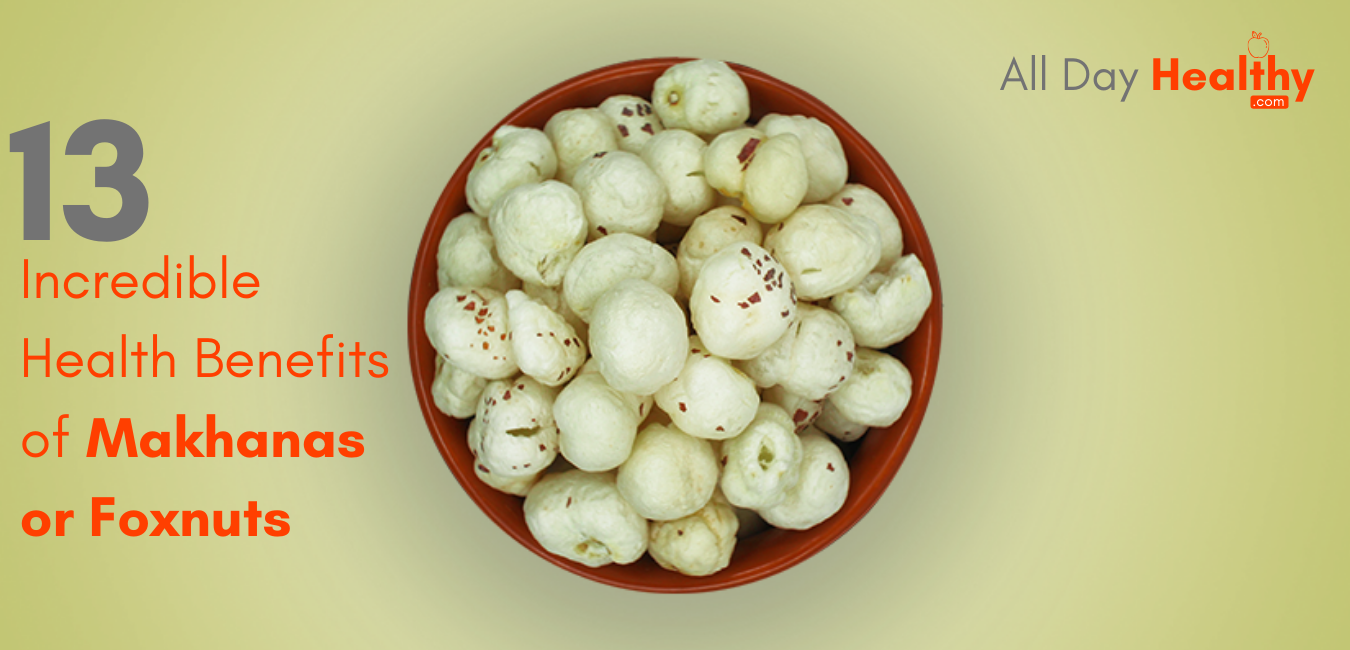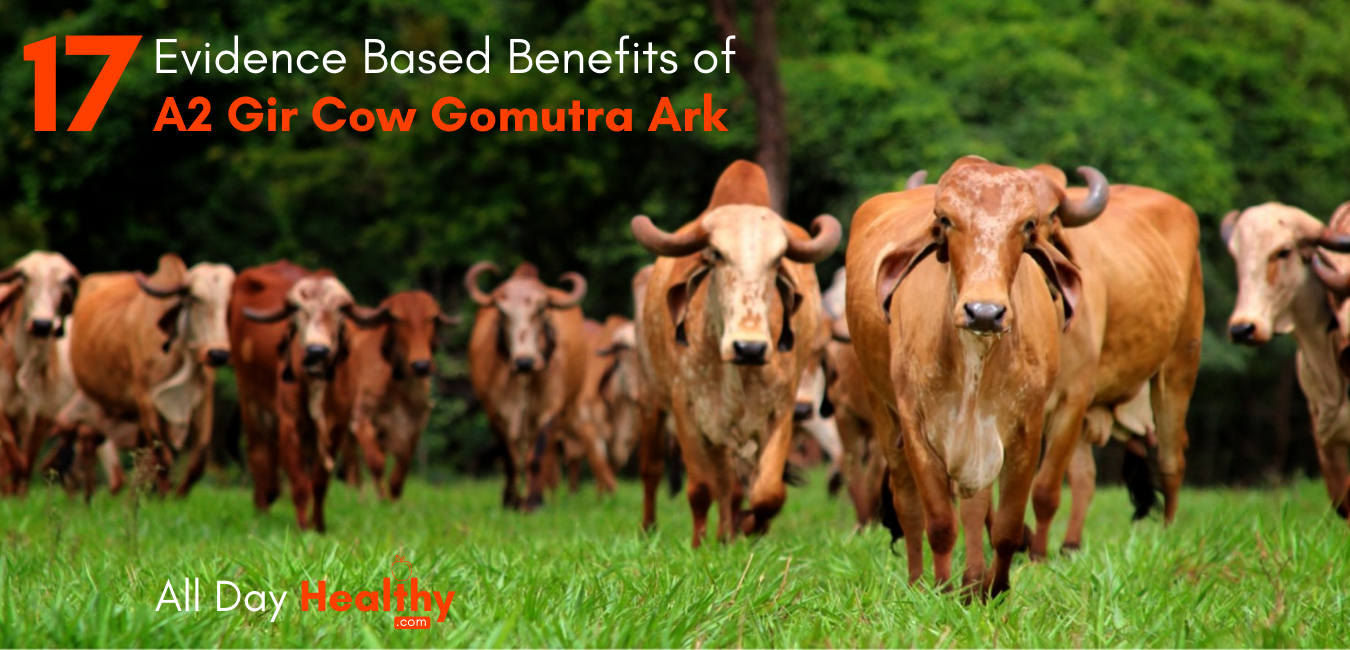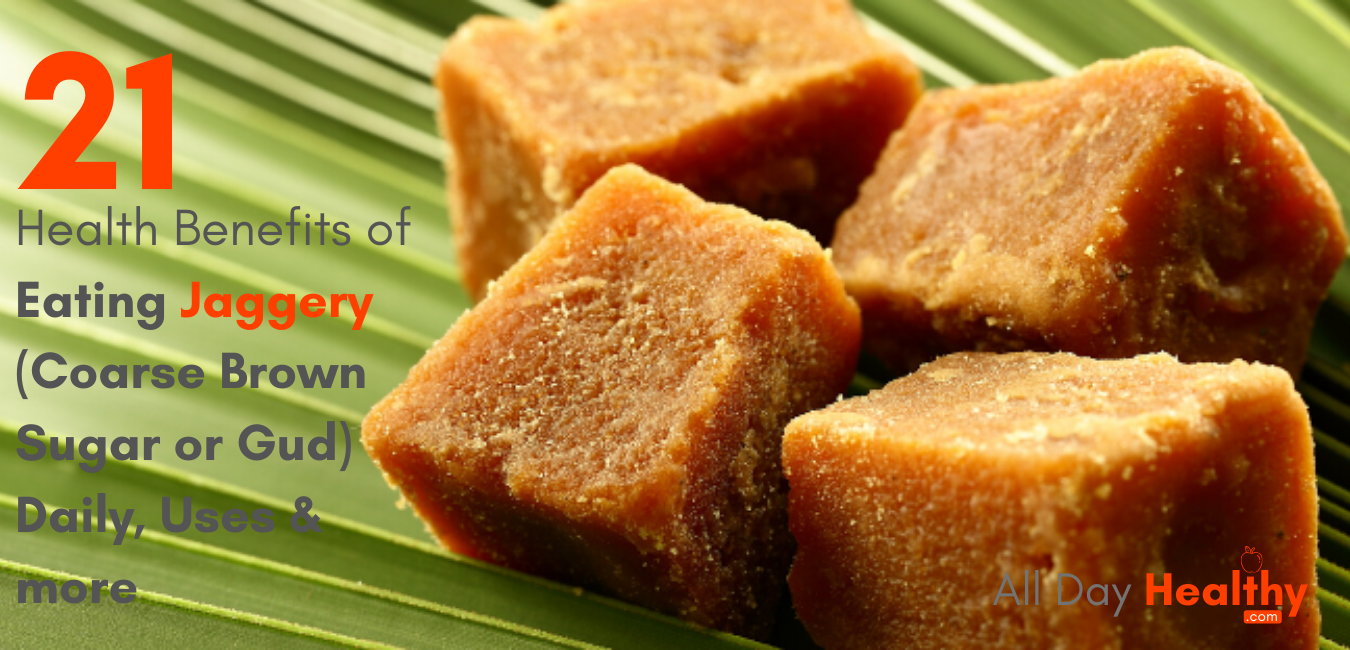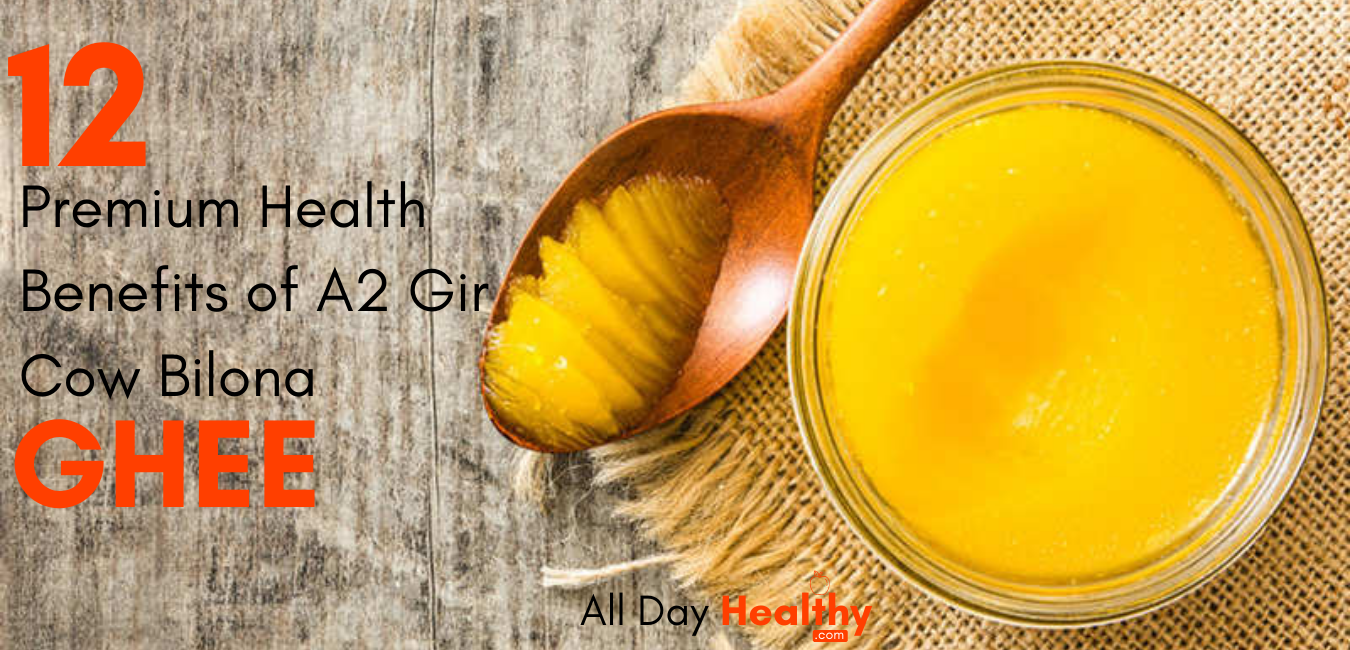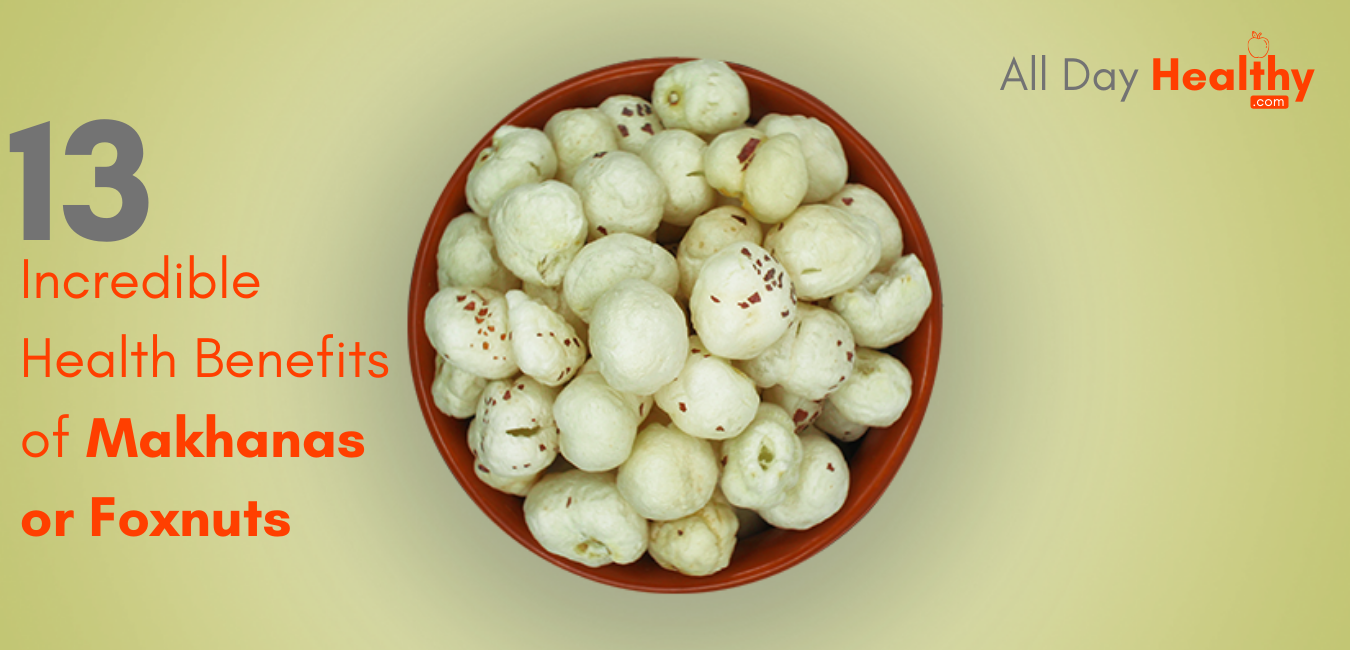Chyawanprash is a herb based formulation and health supplement that can be taken by people, from literally any age group. Both men and women can benefit from taking chyawanprash regularly. It tastes sweet, sour and a tad spicy, and looks like fruit jam to an extent. It is sticky and has a brownish-black hue.
Chyawanprash (also spelled as chyavanaprasam) is an ayurvedic supplement fortified with various herbs, herbal extracts and minerals. It is very rich in Vitamin C content. It helps in the prevention of a variety of diseases through its immunomodulator effects and rejuvenation properties.
What are the others names of Chyawanprash?
Chyawanprash (also spelled chyavanaprasha, chyavanaprash, chyavanaprasam, chamanprash and chyawanaprash)
How to make chyawanprash? As it is, chyawanprash is made with oodles of herbs and plant extracts that have proven medicinal properties. The actual formula of chyawanprash is said to be several thousand years old. The herbs and extracts used to make this formulation have immunity boosting and energizing properties. The formulation can be stored outside the refrigerator and has a long shelf life in general. Brands like Himalaya, Zandu
, Dabur
, Patanjali
& Baidyanath
are known for making quality Chyawanprash in India. The main ingredients of chyawanprash are:

What Is The Nutritional Information of Chyawanprash per 10 grams?
Nutritional Information & Benefits of Chyawanprash include zero percent cholesterol; no Trans-fat, calories from fats are minimal and rich in vitamin C. It contains an abundant amount of Saponins, which makes it good supplement for heart, blood vessels and raised cholesterol levels. Further, it also lowers the cancer risks. 10 grams of Chyawanprash or Chyawanprasham contains:
| Serving Size: 10 grams | Quantity | % Daily Value |
| Calories | 35 | |
| Calories from Fats | 7 | |
| Total Fats | 750 mg | 1 % |
| Saturated Fat | 300 mg | 1.5% |
| Trans Fat | O mg | |
| Cholesterol | 0 mg | 0% |
| Sodium | 5 mg | 0.25% |
| Total Carbohydrate | 7.5 grams | 2.5% |
| Dietary Fiber | 500 mg | 2% |
| Total Sugars | 3.5 to 5.5 grams | |
| Protein | 150 mg | |
| Vitamin C | 2.1 to 3.4 mg | 2.32 to 3.75% |
Percentage Daily Value is based on a 2000 calories diet.
Phytochemicals Compositions
10 grams of Chyawanprash contains:
| Total Flavonoids | 20 mg |
| Total Alkaloids | 80 mg |
| Total Saponins | 5.24 grams |
| Antioxidants | 280 mg |
| Piperine | 4.2 mg |
| Phenolic Compound | 535 mg |
These facts are analysed for chyawanprash containing 36% sugar content
What are the main ingredients used in Ayurvedic Chyawanprash?
10 grams of chyawanprash is prepared from following main ingredients.
| Main Ingredients | Quantity * |
| Amalaki (Amla or Indian Gooseberry) – Phyllanthus Emblica (Emblica Officinalis) | 7060 mg |
| Cow’s ghee (Clarified Butter) | 206 mg |
| Sesame Oil (Til tail) | 206 mg |
| Sugar (Sharkra) ** | 5880 mg |
| Honey (Shahad) | 706 mg |
* Quantity used to prepare 10 Grams Chyawanprash
** Sugar content may vary in different brands. Some add 3500 mg per 10 grams chyawanprash and some add the maximum amount as in the table. Some companies do not add sesame oil for maintaining the best taste of chyawanprash.
Ingredients Used in Ayurvedic Chyawanprash?
Chyawanprash is herbal paste with the consistency of jam. It tastes sweet, sour and spicy. The major ingredients of chyawanprash are Indian gooseberry pulp, sugar syrup, honey, clarified butter (ghee), and sesame oil. Other ingredients include bamboo manna and more herbs listed below.
Note: The Quantity described in the table is the quantity used to prepare 10 grams of chyawanprash. Some of the liquid content of Amla and other ingredients gets evaporated during the process of preparation.
|
Other Ingredients |
Quantity * |
| Vasaka – Adhatoda Vasica | 58.8 mg |
| Bilwa (Bael) – Aegle marmelos | 58.8 mg |
| Agaru (Agarwood) – Aquilaria agallocha | 58.8 mg |
| Punarnava (Spreading hogweed or Common Hogweed) – Boerhaavia diffusa | 58.8 mg |
| Karchoor – Curcuma Zedoaria | 58.8 mg |
| Mustak (Nagarmotha or nut grass) – Cyperus rotundus | 58.8 mg |
| Shalaparni – Desmodium gangeticum | 58.8 mg |
| Elachi (Green cardamom) – Elettaria cardamomum | 58.8 mg |
| Kshir Kakoli – Fritillaria Roylei | 58.8 mg |
| Gambhari (Gmelina) – Gmelina arborea | 58.8 mg |
| Riddhi – Habenaria intermedia | 117.6 mg |
| Shati (Spiked Ginger Lily) – Hedychium spicatum | 58.8 mg |
| Pushkarmool (Elicampane) – Inula Racemosa | 58.8 mg |
| Vidari (Alligator Yam, Milky Yam or Giant Potato) – Ipomoea Digitata | 58.8 mg |
| Jeevanti (Jiwanti) – Leptadenia Reticulata | 58.8 mg |
| Kakoli (White Himalayan lily) – Lilium Polyphyllum | 58.8 mg |
| Meda – Litsea Glutinosa | 58.8 mg |
| Kakanasika (Maritima annua or Martynia diandra) | 58.8 mg |
| Jeevaka – Microstylis muscifera | 58.8 mg |
| Vrishabhaka – Microstylis wallichii | 58.8 mg |
| Kamal Gatta (Lotus Beads) Nelumbium speciosum | 58.8 mg |
| Utpala (Blue Star Water Lily) Nymphaea Stellata | 58.8 mg |
| Shyonaka (Broken bones plant) Oroxylum indicum | 58.8 mg |
| Mudgaparni – Phaseolus Trilobus | 58.8 mg |
| Bhumi Amla – Phyllanthus Urinaria | 58.8 mg |
| Pippali (Long pepper) – Piper longum | 58.8 mg |
| Karkatakashringi (Crab’s claw) – Pistacia integerrima | 58.8 mg |
| Maha medha (Tendril Leaf Solomon’s Seal) – Polygonatum cirrhifolium | 58.8 mg |
| Agnimantha (Premna) – Premna corymbosa | 58.8 mg |
| Lal Chandan (Red Sandalwood) – Pterocarpus santalinus | 58.8 mg |
| Vidarikand – Pueraria Tuberosa | 58.8 mg |
| Chandan (White Sandalwood) – Santalum album | 58.8 mg |
| Bala (Country Mallow) – Sida cordifolia | 58.8 mg |
| Brihati – Solanum indicum | 58.8 mg |
| Kantakari (Thorny Nightshade) – Solanum Surattense | 58.8 mg |
| Patala (Rose Flower Fragrant) – Stereospermum suaveolens | 58.8 mg |
| Mashaparni (Vogel Tephrosis or Blue wiss) – Teramnus labialis | 58.8 mg |
| Haritaki (Chebulic Myrobalan) – Terminalia chebula | 58.8 mg |
| Guduchi (Giloy or Heartleaf moonseed) – Tinospora Cordifolia | 58.8 mg |
| Gokshura (small caltrops) – Tribulus terrestris | 58.8 mg |
| Prishnaparni (Indian Uraria) – Uraria picta | 58.8 mg |
| Mudgaparni (Wild Gram) – Vigna trilobata | 58.8 mg |
| Draksha (Dry Grapes) – Vitis vinifera | 58.8 mg |
| Added Ingredients | Quantity * |
| Vanshlochan (Bamboo manna) | 236 mg |
| Pippali (Long pepper) – Piper longum | 118 mg |
| Dalchini (Cinnamon) – Cinnamomum zeylanicum | 14.7 mg |
| Elachi (Green cardamom) – Elettaria cardamomum | 14.7 mg |
| Tejpata (Indian Bay Leaf) – Cinnamomum Tamala | 14.7 mg |
| Nagkesar – Mesua Ferrea | 14.7 mg |
* Quantity per 10 Grams Chyawanprash
Note:
- Sugar content varies brand to brand and some companies do not add sesame oil, but in classical text Charaka Samhita, sesame oil is a main ingredient of chyawanprash.
- Honey is also added when chyawanprash is cooled down.
What are the Medicinal Benefits of Chyawanprash?
Chyawanprash has following medicinal properties:
- Demulcent
- Energetic & strengthening – enhancing physical performance
- Aphrodisiac
- Diuretic (slightly increase urination)
- Eccritic (promote discharge or ejection of waste matter from the body)
- Antioxidant
- Antiatherogenic (prevents atherogenesis and atherosclerosis)
- Cardiac tonic
- Cardio protective
- Alternative – tending to restore health
- Spermatogenic
- Prevents skin diseases
- Antitussive
- Rejuvenating
- Haematinic (increases hemoglobin levels)
- Immunomodulatory
- Tonic and supplement
Therapeutic Indications of Chyawanprash based on Ayurveda?
Chyawanprash helps in many diseases by improving body defense mechanism to fight against external stimuli and factors that cause a disease in the body. The detailed indications are given in the following list:
- General Debility
- Chronic cough
- Heart diseases
- Anemia
- Asthma
- Recurrent colds
- Blood disorders
- Dry skin
- Headache
- Anorexia nervous
- Indigestion
- Generalized swelling (especially due to unknown etiology)
- Weak eyesight
- Lung injury
- Tuberculosis (TB)
- Male infertility
- General debility
- Nutritional deficiency disorders
- Memory loss
- Attention deficit hyperactivity disorder
- Insomnia (Sleeplessness)
- Debility after any disease
- Dementia
- Alzheimer’s disease
16 Evidence Based Benefits of Eating Chyawanprash in Cold Winters are as below:
Chyavanaprasam is an excellent ergogenic (enhancing physical performance) supplement. Chyavanaprasam provides strength to stomach, intestines, liver, lungs, brain, heart, blood vessels, nerves, kidneys and reproductive organs. Therefore, it is a complete health supplements
Chyawanprash is an Ayurvedic health tonic used to maintain health and improve the immune system of the body. It helps in fighting off the diseases and prevents the illnesses.
1. Acts as an Anti-Aging Supplement
Chyawanprash is an anti aging supplement formulated from herbs that are antioxidants in action. It delays the aging of the cells and meliorates nutritional level in the body. It also improves the oxygen supply to the brain by strengthening the heart. Mainly, Indian gooseberry present in Chyavanaprasam is a powerful antioxidant and very rich in Vitamin C.
2. Digestive System Cleanser
Chyawanprash cleanses the alimentary tract and clears the digestive system. Small particles of waste products continue to deposit on the walls of intestine and colon, which results in toxin formation in the digestive system. Chyawanprash helps to reduce this accumulation of toxins in the intestines and clears the bowel.
It has eccritic action, which means it promotes discharge or ejection of waste products from the body. It acts like as a laxative, which expel the stool from the bowel and promotes bowel movement. Therefore, it can also help patients suffering from constipation.
Note: According to ayurveda, there is possibility of weakening of the intestine, which causes sluggishness of the bowel and lead to the development of chronic constipation. In such cases, eccritic medicines and laxatives should not be used. Therefore, if this is the case of your constipation, or you have used laxative medicines excessively, which makes your intestine weak, and then Chyawanprash cannot help. In such cases, medicines, which improve peristalsis, stimulate peristaltic movement, reduce gas formation in the intestines and strengthen intestines, should be used.
3. Helps in Lowering Cholesterol Levels & Triglycerides
10 grams serving size of Chyawanprash contain 5.25 grams of Saponins, Phyto nutrients help to lower the cholesterol level. Saponins present in Chyavanaprasam blocks the absorption of cholesterol in the body. Bile acids play a role in binding the cholesterol in the body that helps in the absorption of cholesterol in the system.
Saponins from Chyawanprash bind with bile salts and result in decreased absorption of the cholesterol. The body ultimately excretes the maximum amount of cholesterol entered in the digestive system.
4. Reduces Anti-Cancer Risks
As we already discussed that Chyawanprash contains a good amount of Saponins, which also help reducing colon cancer risks. The mechanism is same as in lowering the cholesterol level given above. Saponnins bind the bile salts and may actually lower the risk of colon cancer. Some secondary bile salts increase the colon cancer risk, according to Linus Pauling Institute. The bacteria present in the gut produce these secondary bile acids from the primary bile salts released from the gall bladder and liver. Saponins present in Chyavanaprasam bind both types of bile acids, and thereby reduce the risk of cancer.
5. Gives You a Sudden Glow & Clearer Skin
Chyawanprash is very rich in Phyto nutrients and Vitamin C. It improves the complexion of the skin. Daily intake of Chyawanprash decreases the risk of dry skin and provides a glowing and clearer skin.
6. Prevents Cold, Cough, Flu & Allergies
The main ingredient of Chyawanprash is Indian gooseberry, so it carries all the benefits that Indian gooseberry provides in the body. It prevents colds and allergies by strengthening the immune system of the body. Therefore, eating Chyavanaprasam daily helps to reduce the frequency of recurrent colds and upper respiratory diseases.
7. Controls Body Inflammation
Flavonoids (plant pigments) present in the Chyawanprash prevent the over stimulation of the immune system and thereby prevents unwanted immune responses as well. However, it improves the immunity, but also prevents the immune system to activate unnecessarily. In the presence of flavonoids, mast cells, T cells and B cells work better and alter to the natural behavior of them, so it prevents inflammation and precludes allergies. It prevents excessive inflammation and improves the body strength towards external stimuli. Thereby Chyawanprash helps to treat allergies, asthma and upper respiratory diseases.
8. Beneficial For Brain, Memory & Heart Health
Chyawanprash provides the strength to the heart muscles and improves the pumping capacity of the heart. It also controls the increased heartbeat. It also improves blood circulation in the body by which brain gets the optimum amount of the oxygen. Thereby, the mental capabilities boost up, so it is beneficial in ADHD, insomnia, memory loss, dementia, Alzheimer’s disease and other brain and neurological diseases.
9. Balances Our Body Humors (Tridosha: Vata, Pitta & Kapha)
Chyawanprash does not only rejuvenate the body, but it also balances the three Dosha (Vata Dosha, Pitta Dosha & Kapha Dosha) in the body, according to the ancient Ayurvedic text. Therefore, it has been used since time immemorial for this purpose in Indian subcontinent.
10. Chronic Diseases
However, nowadays we use Chyawanprash as a health supplement, but it is actually a rejuvenative medicine. It means it repairs, helps regeneration and rejuvenates the cells and tissues.
The loss of strength, decrease in restorative power of the body and reduction in immunity occur in chronic diseases. These powers can be achieved again with Chyawanprash.
According to ayurveda, rejuvenative remedy should be started when medicines used for chronic diseases become ineffective. Chyawanprash is such rejuvenative medicine, which can help restoring health, reducing symptoms of chronic diseases, building immunity against external stimuli and triggers, improving other medicines’ actions and enhance medicine’s distribution and bio availability.
11. Calcium Absorption
Chyawanprash promotes calcium absorption in the body that makes bones and teeth stronger.
12. Proteins & Enzymes
Although, it contains a minimal amount of proteins, it increases protein synthesis in the body. Thus, it improves muscle tone and muscle flexibility.
13. Improves Sexual Performance
It improves fertility and helps in loss of libido.
14. Improves Fertility & Women Health
It enhances fertility and helps in regulating the menstrual cycle in women. In pregnant women, it increases hemoglobin level and fulfills the requirement of other nutrients.
15. Replenishing Your Body
Many diseases appear in a series of cycles. Sometimes, they appear and worsen the health and sometimes they subside. To break this cycle, Ayurveda recommends rejuvenation therapy. The chyawanprash is one of the best rejuvenation medicines that we can take for rejuvenation purposes. Therefore, chyawanprash is suitable for people who want to reduce the frequency of recurrence of various chronic diseases.
16. Helpful in Heart Burns & Mouth Ulcers
Chyawanprash contains Indian gooseberry as a main ingredient, so it is also beneficial in heartburn and ulcers.
HOW TO USE
The dosage of Chyawanprash depends on the digestive capacity of the person. There is no specific dosage for Chyawanprash described in the ancient books.
The actual dosage of Chyawanprash should be that a person could digest it without appetite loss and without a decrease in intake of other foods that he normally takes.
| Usual Dose of Chyawanprash | |
| Age Group | Appropriate Dosage |
| Up to 12 Months | Generally Not Recommended; Chyawanprash should not be used until an ayurvedic physician recommends. Instead, lactating mothers can eat Chyawanprash. It will provide benefits to the mother as well as to breastfeeding baby. |
| Toddler (Age: 1 – 3 yrs) | 1 to 2 grams (about 1/7 to 1/4 teaspoon) |
| Preschooler (3 – 5 yrs) | 2.5 to 3.5 grams (about 1/3 to 1/2 teaspoon) |
| Grade-schooler (6 – 12 yrs) | 3.5 to 7.5 grams (1/2 teaspoon to one teaspoon) |
| Teenager (13 -19 yrs) | 7.5 to 15 grams (1 to 2 teaspoons) |
| Adults (19 to 60 yrs) | 12 to 24 grams (about 1.5 to 3 teaspoons) |
| Geriatric (above 60 yrs) | 7.5 to 15 grams (1 to 2 teaspoons) |
| Pregnancy | 3.75 to 7.5 grams (a half to one teaspoon) – in most cases, a half tsp. (3.75 grams) of chyawanprash is sufficient dosage during pregnancy to get all nutritional as well as health benefits. The maximum dosage in pregnancy should not exceed 2 teaspoons (15 grams) a day (One teaspoon in the morning and one teaspoon in the evening). |
| Lactation | 7.5 to 15 grams (1 to 2 teaspoons) |
| Maximum Possible Dosage | Possibly 48 grams Per Day (in divided doses) |
| Doses | 1 or 2 doses per day |
Note: Actually, 1 tsp. means taking up to the level of the edges of the spoon, not above. According to this principle, 1 teaspoon contains about 7.5 grams Chyawanprash. We have measured for US standard teaspoon. The US standard for 1 teaspoon is that it should contain about 4.9 ml water within it.
Method to Take Chyawanprash
You can eat chyawanprash with warm milk in the appropriate dosage according to your age. Goat’s milk and cow’s milk are most suitable adjuvants for it.
| Right Time to Take Chyawanprash | On an empty stomach in the morning or before a meal; if taken twice, then one can also take it 30 minutes before dinner or 2 hours after dinner. |
| How often should you take Chyawanprash in the day? | 1 or 2 times; once a day is sufficient in most cases. Children should take it once a day. |
| Adjuvant | However, the specific adjuvant for taking chyawanprash is not described in Charaka Samhita. Generally, it is advised to take it with goat’s milk or cow’s milk. You can also take it with Almond milk if you don’t take dairy foods. You can also eat it without milk. |
Note: In some people, taking chyawanprash with milk cause gas formation in the abdomen. If it occurs to you, then you should eat it without milk and you can drink milk 30 minutes after taking it. If it is still not suitable for you, then you can alternatively eat it without any adjuvant, or you can take it with almond milk.
FAQs
Should I take Chyawanprash with milk or without milk?
The Ayurvedic ancient text has not explained any adjuvant for taking Chyawanprash. They just recommend eating it on an empty stomach in the amount that you can digest easily.
The correct method of taking Chyawanprash is eating it by licking without milk or any other adjuvant. If you want to drink milk, then it should be best if it is taken after half an hour.
Amla is the main ingredient of Chyawanprash. Amla is believed to be an exception in wrong food combination that suggests milk is bad with sour foods. Most of individuals are taking it with milk.
However, it can also be taken with milk. In some people, it can cause intestinal gas. If you are suffering from intestinal gas, or if taking chyawanprash with milk results in gas formation in the abdomen, then it is best to avoid eating it with milk.
Will there be any harm if I take Chyawanprash with milk?
Many people take Chyawanprash with milk without experiencing any side effects or harmful effects. In a few people, taking chyawanprash with milk can cause excess intestinal gas.
What is the minimum age to start Chyawanprash in kids?
You can start giving Chyawanprash to kids older than 1 year of age if recommended by an ayurvedic physician. Otherwise, it should be best to start after the age of 3.
What type of Chyawanprash should be given to kids/children?
Before buying, check the label of Chyawanprash for its ingredients. Purchase simple Chyawanprash, which does not contain Makardhwaj. Makardhwaj may not be suitable for children.
Can I take chyawanprash during summer or hot weather?
There is a misconception that chyawanprash produces heat in the body and should not be taken during hot weather. It is not true.
The main ingredient of chyawanprash is Amla, which exerts cooling action. However, it also contains ingredients having hot potency, but overall it is a balanced formulation. These ingredients are not enough to reduce the cooling effect of Amla (Indian Gooseberry), but they might balance it.
In fact, some of the ayurvedic texts recommend it in diseases resulting from Pitta increase in the body. These conditions include sunstroke, vertigo, nervine weakness, tachycardia, insomnia, anemia, etc.
In fact, chyawanprash reduces the heating property of Pitta, but it might slightly increase the sour property of Pitta due to Amla. That is why some people misunderstood the concept.
If a patient suffers from frequent urination, frequent loose stools or diarrhea, abdominal gas, bloating and dark yellowish urine, Chyawanprash should not be given. These include some Pitta conditions and some Vata conditions. Amla is also contraindicated in these diseases. If you are healthy and don’t suffer from any of these diseases, then you can absolutely take chyawanprash during summers.
Chyawanprash During Pregnancy : Women
Can we use chyawanprash in pregnancy? What are its benefits if taken during pregnancy? These are two questions asked by many people.
Yes, chyawanprash is SAFE and BENEFICIAL during Pregnancy. Ayurveda recommends using it for improving overall health of pregnant woman as well as developing fetus. It is beneficial in nutritional deficiencies and promoting blood formation, so it also helps to increase your hemoglobin levels. It provides following benefits to pregnant women.
- Vitamin C: Pregnant woman require at least 85 mg vitamin C (ascorbic acid) per day. The natural source of Vitamin C is considered best over unnatural supplement. In addition to other foods, it helps fulfilling minimum daily requirement of vitamin C in pregnant women. Vitamin C is also essential during pregnancy because it require for bone growth and preventing bone mineral losses. It is also a potent antioxidant and protects cells and tissues from damage. In developing fetus, chyawanprash helps a proper growth and development of cartilage, tendons, bones and skin. Vitamin C deficiency during pregnancy can lead to impair mental development in newborn babies, according to some research studies.
- Enhances Iron absorption & Helps in Anemia: Chyawanprash itself is a good natural and safer souse of Iron and vitamin C. Vitamin C helps the body to absorb Iron. Therefore, it also helps in the management of low hemoglobin level in the pregnant women. In addition to this, chyawanprash has haematinic property, which means it increases hemoglobin levels and hematogenic property by which it helps forming the red blood cells.
Medical science also recommends using natural source of vitamin C than its supplements. All ingredients in chyawanprash are derived from the nature and are safer than unnatural Vitamin C supplement.
Unnatural source of Vitamin C like Vitamin C tablets may not be safe because there are contradictory studies on this subject. Some studies have suggested that vitamin C supplementation may reduce premature rupture of the membranes and some have showed that it may increase the risk of preterm birth. These things are not observed with vitamin C gained through the natural sources like Amla, orange juice, lemon, grapefruit, strawberries, raspberries etc.
What type of Chyawanprash can be taken during pregnancy?
You should take simple Chyawanprash, which does not contain mineral or bhasma ingredients. Especially, your Chyawanprash should not contain Makardhwaj. Makardhwaj is contraindicated during pregnancy. Always check the label of Chyawanprash before consuming.
General simple formulation of Chyawanprash will be best and you should not go for Special Chyawanprash preparations.
When should I start taking Chyawanprash during pregnancy?
There is no certain rule for starting or discontinuing Chyawanprash during pregnancy. You can take simple Chyawanprash throughout the pregnancy.
Is it safe to eat Chyawanprash during pregnancy?
According to ayurvedic concept, the simple formulation of Chyawanprash is likely safe to consume by pregnant women.
Side Effects
There are no or minimal side effects reported with the use of Chyawanprash. A few side effects may appear in people who are more prone to indigestion, gas, abdominal bloating, loose stools and abdominal distention. The regular intake of Chyawanprash may increase these symptoms, but does not cause them itself.
The most of these side effects come to notice when people eating Chyawanprash with milk. It may be due to the use of milk as an adjuvant.
The many people who eat chyawanprash without any adjuvant, there is nothing wrong reported or observed.
Contraindications
In following conditions, people should not eat Chyawanprash:
- Highly Acidic Urine: If urine pH value indicates highly acidic urine, then Chyawanprash should not be taken. Symptoms of highly acidic urine are burning during urination and risk of uric acid stones in the kidneys.
- Nocturia (nighttime excessive urination or Frequent urination at night) – it can increase diuresis due to its diuretic action
- Uncontrolled diabetes mellitus
- Slow digestion process
- Nocturnal emission (night fall)
- Abdominal Gas or intestinal gas (it increases gas formation in the body. It can be noticeable when it is taken in heavy dosage more than 20 grams)
- Abdominal Distension due to excess gas in the abdomen
- Chronic constipation when intestine becomes weak and sluggish
- Loose stools
- Diarrhea (loose motion)
- Dark yellowish urine
Chyawanprash is likely to worsen these conditions. Therefore, if you are suffering from any of these health problems, you should not eat Chyawanprash.
Precautions
People suffering from Diabetes should regularly monitor their blood sugar level if taking Chyawanprash because it contains sugar content.
Click Here to Buy 100% Ayurvedic Chyawanprash With or Without Sugar at Best Price from Amazon.in

